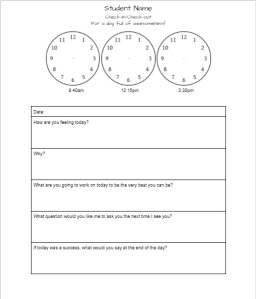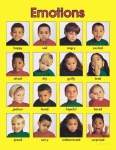Last week I wrote a post called “What if we give her the attention she seeks?” and several people reached out to ask what we are specifically doing to make school the need-satisfying place this little girl needs it to be.
Beth entered our school this year and upon finding out about her previous difficulties in school with disrupting, refusing to work, and aggression, we knew we had a golden opportunity to change the trajectory of her school career and maybe even her life. Beth’s arrival came at the perfect time because our entire district was fortunate enough to hear Dr. Stephanie Grant talk about becoming trauma-informed educators. We didn’t have to hear all the details about Beth’s life to understand that she has experienced trauma that no little girl, much less an adult, knows how to handle.
We decided that we would make the school office a place where Beth can get her needs met. Well, actually, in most schools students end up in the office as they are working hard to get their needs met. Usually though, it is only after causing a problem in the classroom that the student is sent to the office for the one-on-one attention that he/she so desperately needs. The difference for Beth would be that she didn’t have to act out to get the attention she seeks. We built it into her schedule and gave her the opportunity to come down to the office whenever she feels like she needs something.
Beth has a teacher with a huge heart, lots of patience, and decades of teaching experience. Her teacher was willing to put aside “how things are usually done” and make a plan to help Beth get what she needs.
Our two wonderful office ladies also have many years of experience and expertise and were willing to take on a different role for Beth, to have patience with her, and to think outside the box to help her get what she needs. As her principal, I delight in walking into the office to see our secretaries laughing with Beth when she visits.
We give her what she needs within the functions of her school day so she doesn’t have to become dysfunctional to get what she needs.
Here is what we are specifically doing. It’s not rocket science, it’s mostly stolen from other really smart people, but it works. Really well.

Beth comes to the office three times a day to check-in/check-out, for a total of about eight minutes a day.
First, Beth comes to the office as soon as she has put her coat and bag away. We ask her five simple questions and it can take as little as 2-3 minutes.

To help her identify her feelings, we use a poster like this.
I typically ask Beth the questions, sometimes helping her make goals based upon the behavior I am seeing from her and based upon input from her classroom teacher. If I am not in the office, one of our secretaries will help her or even other teachers ask her the questions. Sometimes Beth writes the answers and sometimes we do.
She comes back for a quick check-in as she transitions from lunch to recess. At this time, we ask her the “What would you like me to ask you the next time I see you?” question. She answers and then off she goes to recess. This check-in takes about one minute.
Last, Beth checks in with us right before she goes home. We quickly go over the goals she set for herself in the morning and she lets us know if she met those goals. Sometimes Beth makes a checklist of things she wants to accomplish that day, like raising her hand instead of blurting out and treating others the way she wants to be treated. At the end of the day, she decides whether she met those goals or not. This check-out takes about 3-4 minutes.
Water and Small Snacks
We have a little bottle of water in our office refrigerator labeled “Beth” and she can come get it whenever she needs it. She is always careful to return it so it will be ready for her the next time. Sometimes she comes to get it because she is thirsty or because she has a sore throat. Sometimes she comes to get it because she needs a break from the classroom. Sometimes she comes to get it because she needs some attention from me or the office staff.
We also have small healthy snacks available for Beth anytime she needs something to eat. She may have forgotten her snack or not ate enough for breakfast or lunch. She knows there is always something for her in the office. Dr. Stephanie Grant suggests keeping carrot sticks in the office for students who are hungry. No one has ever binged on carrot sticks, right?
Band-aids/Ice/TLC
Whenever Beth comes to the office, we give her what she says she needs. She might need a band-aid for an invisible paper cut. She might need ice for a perceived bump on her knee. Or, she might just need to sit in the office for a few minutes and read her book.
I was talking with a teacher who has attended several additional professional learning opportunities about becoming a trauma-informed educator, and I asked her what her biggest take-away has been from all she has learned. I will never forget her two-word response.
“Believe them.”
We believe Beth.
This one brings tears to my eyes. The power of believing in her, believing that she needs something when she asks, letting her know that she doesn’t need to do anything other than just ask and we will help her. The power of that one little thing is overwhelming.
There are occasions when Beth needs redirection or struggles, but she does not come to the office after acting out in class. We have developed a different system to help her get what she needs then. We want to be careful to not slide down a slippery slope to find out that, all of a sudden, Beth only comes to the office when she is in “trouble”. That would completely defeat the purpose of the plan.
Everyone who encounters Beth on a daily basis agrees…the joy she fills us with far outweighs any supports we provide her.
Yes, it is really this simple:
- Check-in/Check-out
- Water and Small Snacks
- Band-aids/Ice/TLC
All of our ideas are stolen. Please feel free to steal any of these three easy steps to help a Beth in your life. But, don’t forget the most important idea of all.
One of the biggest gifts you can give a child is to believe them.


Thanks for sharing this great idea!
LikeLiked by 1 person
Yes. Believe them and love them unconditionally. Because you may be the first person in their life to ever do so.
LikeLiked by 1 person
So true Katie!! Love your heart (and your kids!!)
LikeLike
I like this.
Thanks for resending.
Believe them.
LikeLike